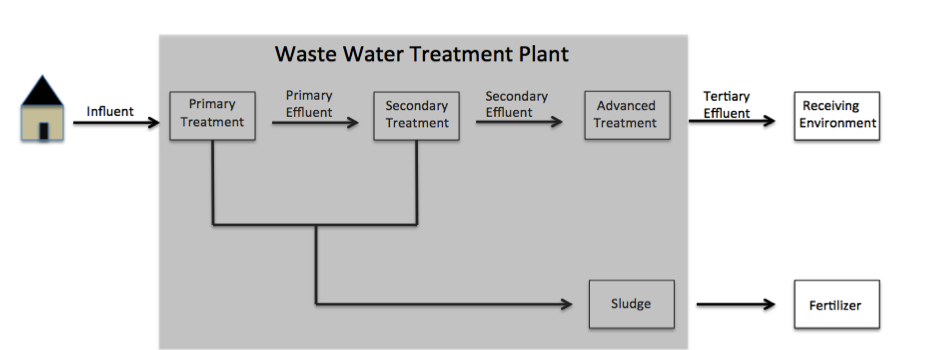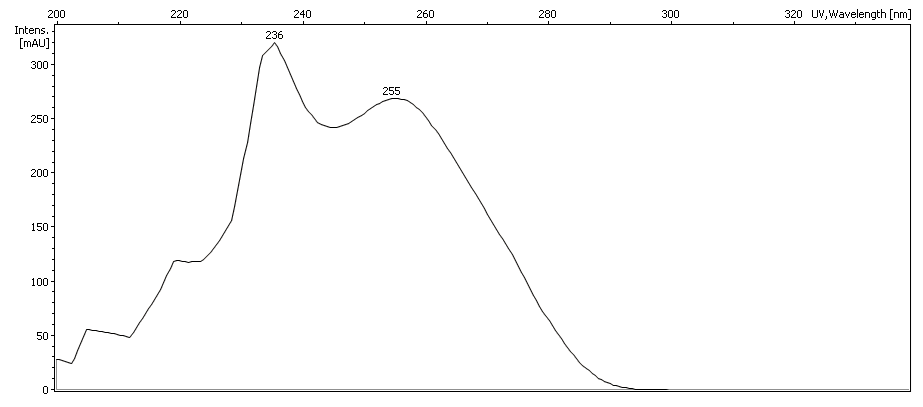|
Parabens
Parabens are organic compounds that are commonly used as preservatives in Cosmetics, cosmetic and pharmaceutical products. They are esters of parahydroxybenzoic acid (also known as 4-hydroxybenzoic acid). Chemistry Structure and structure Parabens are esters of 4-Hydroxybenzoic acid, ''para''-hydroxy''ben''zoic acid, from which the name is derived. Common parabens include methylparaben (E number E218), ethylparaben (E214), propylparaben (E216), butylparaben and heptylparaben (E209). Less common parabens include isobutylparaben, isopropylparaben, benzylparaben and their sodium salts. They are produced by the esterification of 4-hydroxybenzoic acid, ''para''-hydroxybenzoic acid with the appropriate Alcohol (chemistry), alcohol, such as methanol, ethanol, or n-propanol. ''para''-Hydroxybenzoic acid is in turn produced industrially from a modification of the Kolbe-Schmitt reaction, using potassium phenol, phenoxide and carbon dioxide. Biological mode of action Parabens are act ... [...More Info...] [...Related Items...] OR: [Wikipedia] [Google] [Baidu] |
Butylparaben
Butylparaben, or butyl ''p''-hydroxybenzoate, is an organic compound with the formula . It is a white solid that is soluble in organic solvents. It has proven to be a highly successful antimicrobial preservative in cosmetics. It is also used in medication suspensions, and as a flavoring additive in food. Natural occurrence Members of the paraben family are found in fruit and vegetable products, such as barley, flax seed, and grapes. Butylparaben has also been found to be produced in some microorganisms including ''Microbulbifer ''. Preparation Butylparaben is prepared by the esterification of 4-Hydroxybenzoic acid, 4-hydroxybenzoic acid with n-Butanol, 1-butanol in the presence of an acid catalyst such as sulfuric acid. It is produced industrially. Uses and reactions Butylparaben is one of the most common bactericidal/fungicidal additives in cosmetics. It has been used in cosmetic products since the 1940s and in pharmaceutical products since 1924. The popularity of butyl ... [...More Info...] [...Related Items...] OR: [Wikipedia] [Google] [Baidu] |
Propylparaben
Propylparaben (also spelled propyl paraben) is the ''n''-propyl ester of ''p''-hydroxybenzoic acid. It occurs as a natural substance found in many plants and some insects. Additionally, it can be manufactured synthetically for use in cosmetics, pharmaceuticals, and foods. It is a member of the class of parabens and can be used as a preservative in many water-based cosmetics, such as creams, lotions, shampoos, and bath products. As a food additive, it has an E number, which is E216. Sodium propyl ''p''-hydroxybenzoate, the sodium salt of propylparaben, a compound with formula Na(C3H7(C6H4COO)O), is used similarly as a food additive and as an anti-fungal preservation agent. Its E number is E217. In 2010, the European Union Scientific Committee on Consumer Safety stated that the use of butylparaben and propylparaben as preservatives in finished cosmetic products as safe to the consumer, as long as the sum of their concentrations does not exceed 0.19%. Applications Food Under F ... [...More Info...] [...Related Items...] OR: [Wikipedia] [Google] [Baidu] |
Methylparaben
Methylparaben (methyl paraben) one of the parabens, is a preservative with the chemical formula . It is the methyl ester of ''p''-hydroxybenzoic acid. Several related esters are known (ethyl-, propyl-, butylparaben). Together they are the most common preservatives in cosmetics and foods. Among their advantages, parabens are inexpensive, colorless, stable, odorless, and readily biodegraded. Natural occurrences Methylparaben serves as a pheromone for a variety of insects and is a component of queen mandibular pheromone. It is a pheromone in wolves produced during estrus associated with the behavior of alpha male wolves preventing other males from mounting females in heat. Uses Methylparaben is an anti-fungal agent often used in a variety of cosmetics and personal-care products. It is also used as a food preservative and has the E number E218. Methylparaben is commonly used as a fungicide in ''Drosophila'' food media at 0.1%. To ''Drosophila'', methylparaben is toxic ... [...More Info...] [...Related Items...] OR: [Wikipedia] [Google] [Baidu] |
Heptylparaben
Heptylparaben (heptyl ''p''-hydroxybenzoate) is a compound with formula C7H15(C6H4OHCOO). It is a paraben which is the heptyl ester of ''p''-hydroxybenzoic acid. Heptylparaben has also been found to be produced in some microorganisms including '' Microbulbifer''. As a food additive it has E number E numbers, short for Europe numbers, are codes for substances used as food additives, including those found naturally in many foods, such as vitamin C, for use within the European Union (EU) and European Free Trade Association (EFTA). Commonly ... E209, and is used as a preservative. References {{phenol-stub Parabens ... [...More Info...] [...Related Items...] OR: [Wikipedia] [Google] [Baidu] |
Ethylparaben
Ethylparaben (ethyl ''para''-hydroxybenzoate) is the ethyl ester of ''p''-hydroxybenzoic acid. Its formula is HO-C6H4-CO-O-CH2CH3. It is a member of the class of compounds known as parabens. It is used as an antifungal preservative. As a food additive, it has E number E214. Sodium ethyl ''para''-hydroxybenzoate, the sodium salt In common usage, salt is a mineral composed primarily of sodium chloride (NaCl). When used in food, especially in granulated form, it is more formally called table salt. In the form of a natural crystalline mineral, salt is also known as r ... of ethylparaben, has the same uses and is given the E number E215. References Ethyl esters E-number additives Parabens {{phenol-stub ... [...More Info...] [...Related Items...] OR: [Wikipedia] [Google] [Baidu] |
Isopropylparaben
Isopropylparaben is a paraben. Synthesis Isopropylparaben has been prepared via the stepwise addition of isopropanol, thionyl chloride Thionyl chloride is an inorganic compound with the chemical formula . It is a moderately Volatility (chemistry), volatile, colourless liquid with an unpleasant acrid odour. Thionyl chloride is primarily used as a Halogenation, chlorinating reagen ..., and ''p''-hydroxybenzoic acid at low temperature, followed by heating the reaction mixture. Sunbin Lu, Qiao Zhou and Shitao Zhou, “A process for preparing isopropyl p-hydroxybenzoate”, Chinese Patent 103,420,841 A 20131204 (2013) References {{Reflist External links Final amended report on the safety assessment of Methylparaben, Ethylparaben, Propylparaben, Isopropylparaben, Butylparaben, Isobutylparaben, and Benzylparaben as used in cosmetic products Cleaning product components Parabens Isopropyl esters ... [...More Info...] [...Related Items...] OR: [Wikipedia] [Google] [Baidu] |
Carbon Dioxide
Carbon dioxide is a chemical compound with the chemical formula . It is made up of molecules that each have one carbon atom covalent bond, covalently double bonded to two oxygen atoms. It is found in a gas state at room temperature and at normally-encountered concentrations it is odorless. As the source of carbon in the carbon cycle, atmospheric is the primary carbon source for life on Earth. In the air, carbon dioxide is transparent to visible light but absorbs infrared, infrared radiation, acting as a greenhouse gas. Carbon dioxide is soluble in water and is found in groundwater, lakes, ice caps, and seawater. It is a trace gas Carbon dioxide in Earth's atmosphere, in Earth's atmosphere at 421 parts per million (ppm), or about 0.042% (as of May 2022) having risen from pre-industrial levels of 280 ppm or about 0.028%. Burning fossil fuels is the main cause of these increased concentrations, which are the primary cause of climate change.IPCC (2022Summary for pol ... [...More Info...] [...Related Items...] OR: [Wikipedia] [Google] [Baidu] |
Microorganisms
A microorganism, or microbe, is an organism of microscopic size, which may exist in its single-celled form or as a colony of cells. The possible existence of unseen microbial life was suspected from antiquity, with an early attestation in Jain literature authored in 6th-century BC India. The scientific study of microorganisms began with their observation under the microscope in the 1670s by Anton van Leeuwenhoek. In the 1850s, Louis Pasteur found that microorganisms caused food spoilage, debunking the theory of spontaneous generation. In the 1880s, Robert Koch discovered that microorganisms caused the diseases tuberculosis, cholera, diphtheria, and anthrax. Microorganisms are extremely diverse, representing most unicellular organisms in all three domains of life: two of the three domains, Archaea and Bacteria, only contain microorganisms. The third domain, Eukaryota, includes all multicellular organisms as well as many unicellular protists and protozoans that ar ... [...More Info...] [...Related Items...] OR: [Wikipedia] [Google] [Baidu] |
Antibacterial
An antibiotic is a type of antimicrobial substance active against bacteria. It is the most important type of antibacterial agent for fighting bacterial infections, and antibiotic medications are widely used in the treatment and prevention of such infections. They may either kill or inhibit the growth of bacteria. A limited number of antibiotics also possess antiprotozoal activity. Antibiotics are not effective against viruses such as the ones which cause the common cold or influenza. Drugs which inhibit growth of viruses are termed antiviral drugs or antivirals. Antibiotics are also not effective against fungi. Drugs which inhibit growth of fungi are called antifungal drugs. Sometimes, the term ''antibiotic''—literally "opposing life", from the Greek roots ἀντι ''anti'', "against" and βίος ''bios'', "life"—is broadly used to refer to any substance used against microbes, but in the usual medical usage, antibiotics (such as penicillin) are those produced ... [...More Info...] [...Related Items...] OR: [Wikipedia] [Google] [Baidu] |
Shampoo
Shampoo () is a hair care product, typically in the form of a viscous liquid, that is formulated to be used for cleaning (scalp) hair. Less commonly, it is available in solid bar format. (" Dry shampoo" is a separate product.) Shampoo is used by applying it to wet hair, massaging the product in the hair, roots and scalp, and then rinsing it out. Some users may follow a shampooing with the use of hair conditioner. Shampoo is typically used to remove the unwanted build-up of sebum (natural oils) in the hair without stripping out so much as to make hair unmanageable. Shampoo is generally made by combining a surfactant, most often sodium lauryl sulfate or sodium laureth sulfate, with a co-surfactant, most often cocamidopropyl betaine in water. The sulfate ingredient acts as a surfactant, trapping oils and other contaminants, similarly to soap. Shampoos are marketed to people with hair. There are also shampoos intended for animals that may contain insecticides or other medica ... [...More Info...] [...Related Items...] OR: [Wikipedia] [Google] [Baidu] |





